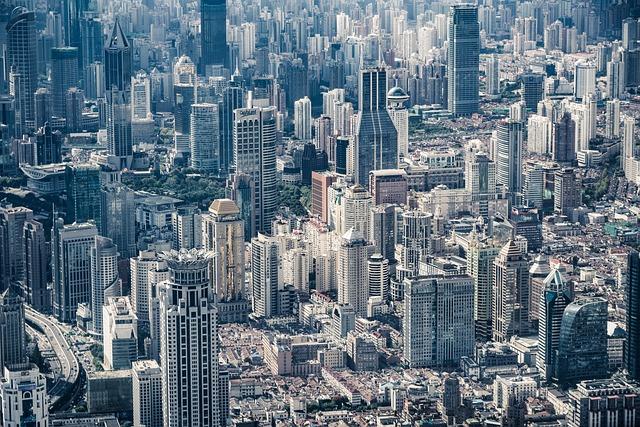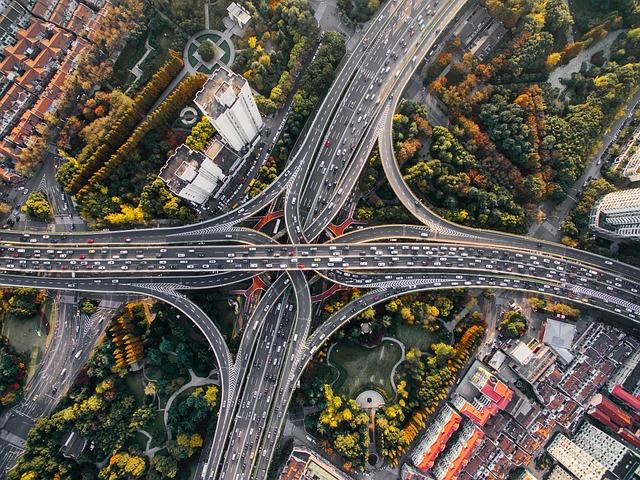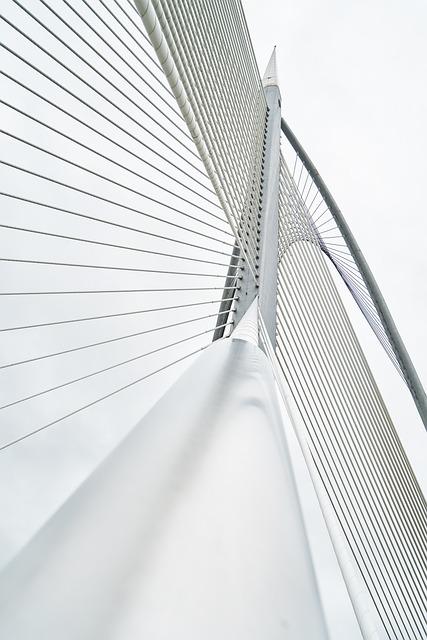Building Pakistan’s Future: Infrastructure Development Challenges
In the heart of South Asia lies Pakistan, a nation brimming with potential, culture, and ambition. Yet, as it strides into the future, it finds itself at a critical crossroads—a time to harness its relentless drive towards economic progress while grappling with the formidable challenges of infrastructure development. The country’s roads, bridges, and urban landscapes tell a complex story of both promise and peril, reflecting centuries of growth intertwined with obstacles. As Pakistan aims to lay down the foundations for a prosperous tomorrow, it must confront multifaceted issues including resource allocation, technological integration, and environmental sustainability. In this exploration of the current landscape, we delve into the intricate challenges that hinder progress and illuminate the opportunities that lie ahead. The journey towards a robust infrastructure is not merely a tactic for development; it is a cornerstone for a thriving economy and a brighter, more equitable future for all its citizens. Join us as we unravel the complexities of building Pakistan’s future, one challenge at a time.
Emerging Urban Landscapes and the Quest for Sustainable City Planning
As urban areas in Pakistan continue to expand, the need for innovative and sustainable urban planning is at the forefront of discussions among policymakers and city planners. Key challenges include balancing the rapid urbanization with environmental conservation, providing affordable housing, and ensuring equitable access to resources. Core strategies for addressing these challenges may involve:
- Green Infrastructure: Incorporating parks and green spaces into urban areas to enhance biodiversity and reduce urban heat.
- Smart Technology: Utilizing data-driven approaches to improve transportation, waste management, and energy efficiency.
- Community Engagement: Involving local populations in decision-making processes to tailor urban solutions to community needs.
Furthermore, it is essential to analyze existing data and models to predict future urban growth accurately. Identifying key indicators that influence urban development will enable planners to adopt a proactive approach. A structured framework to evaluate these elements can be encapsulated in the following table:
| Indicator | Description | Impact |
|---|---|---|
| Population Growth | Increase in urban population | Higher demand for housing and public services |
| Environmental Quality | Air and water quality metrics | Influences health and livability scores |
| Infrastructure Investment | Funding to develop transportation and amenities | Improves economic opportunities and mobility |
Addressing the complexities of urban landscapes requires not just vision but collaboration across sectors. Engaging stakeholders from government, businesses, and the community is crucial for driving initiatives that resonate and succeed within the urban ecosystem. By synergizing traditional methods with progressive ideas, Pakistan can navigate its infrastructure challenges and build a resilient future for its cities.

Transforming Transport Networks: Addressing Connectivity and Efficiency
The evolution of transport networks in Pakistan is pivotal for achieving enhanced connectivity and efficiency across the nation. A well-structured transportation system not only facilitates smoother travel but also boosts economic growth by improving access to markets and resources. Key areas that require transformation include:
- Road Infrastructure: Upgrading existing highways and developing new expressways to reduce traffic congestion.
- Public Transport: Expanding bus and rail services to provide affordable and reliable options for the population.
- Logistics Hubs: Establishing central hubs to streamline the distribution of goods, enhancing trade routes.
To effectively address these challenges, investment in technology is essential. Intelligent transport systems can optimize traffic flows and improve safety on roads. Additionally, modernizing ports and airports will create a seamless connection for both domestic and international travelers. Consider the benefits of adopting these innovations through a structured approach:
| Innovation | Expected Benefit |
|---|---|
| Smart Traffic Management | Reduced Congestion |
| Automated Public Transport | Increased Efficiency |
| Digital Logistics Platforms | Streamlined Supply Chains |
By addressing these infrastructure challenges head-on, Pakistan can build a robust transport network that not only meets current demands but also adapts to future growth, fostering economic development and improving the quality of life for its citizens.

Powering Progress: Energy Infrastructure and Its Role in National Growth
The backbone of any nation’s growth lies in its energy infrastructure. For Pakistan, the ability to harness and distribute energy efficiently directly correlates with its economic potential. With a growing population and expanding industrial base, the demand for reliable power supply continues to escalate. To meet these demands, investments in renewable energy sources, such as solar and wind, are imperative. Modernizing existing grids and ensuring energy access in rural areas must become a priority, as they form the nucleus of sustainable development.
Furthermore, addressing the challenges of energy distribution involves not only upgrading infrastructure but also enhancing regulatory frameworks to attract foreign investments. Collaborations with private sectors for energy projects can stimulate innovation and reduce costs. Key initiatives should focus on:
- Improving transmission efficiency
- Implementing smart grid technologies
- Developing public-private partnerships
To illustrate the potential benefits of a robust energy infrastructure, the following table outlines the projected impact on key economic indicators over the next decade:
| Indicator | Current Status | Projected 2030 Status |
|---|---|---|
| GDP Growth Rate | 4.1% | 6.5% |
| Access to Electricity | 75% | 90% |
| Renewable Energy Share | 10% | 30% |

Financial Strategies for Infrastructure Investment: Bridging the Funding Gap
To effectively address the funding shortfall in Pakistan’s infrastructure development, it is crucial to explore innovative financial strategies that can mobilize both public and private sector investments. Public-private partnerships (PPPs) have emerged as a powerful approach, allowing the government to leverage private sector efficiency and capital while sharing the financial risks associated with large-scale projects. By offering attractive incentives such as tax breaks, revenue-sharing agreements, and guaranteed returns, the government can create a favorable environment that encourages private investors to participate in essential infrastructure projects.
Moreover, leveraging multilateral financing institutions can also provide a critical boost to funding availability. Collaborations with organizations like the Asian Development Bank (ADB) or the World Bank can offer access to substantial financial resources and technical expertise necessary for effective project execution. Additionally, local financing options, such as issuing infrastructure bonds or establishing specialized investment funds, can cater to the growing interest of domestic investors who seek stable, long-term returns on their investments. Establishing a streamlined and transparent regulatory framework will further enhance confidence among stakeholders, ensuring sustainable growth in infrastructure investment.
Concluding Remarks
As we stand at the crossroads of opportunity and challenge, the journey toward building Pakistan’s future through robust infrastructure development is fraught with complexities yet brimming with potential. The path ahead demands not only strategic planning and investment but also a collaborative spirit among government entities, private stakeholders, and communities.
The challenges we face—ranging from resource allocation to environmental sustainability—require innovative solutions and a commitment to inclusive growth. It is through navigating these hurdles that we can pave the way for a brighter tomorrow, where connectivity, accessibility, and resilience become cornerstones of our society.
In the grand tapestry of nation-building, infrastructure acts as the thread that binds us. Let us embrace this pivotal moment and chart a course that transforms our challenges into catalysts for progress. The future of Pakistan is not merely a vision; it is an obligation we owe to generations yet to come. Together, let us build bridges—both literal and metaphorical—that will lead us into a prosperous and sustainable era.



